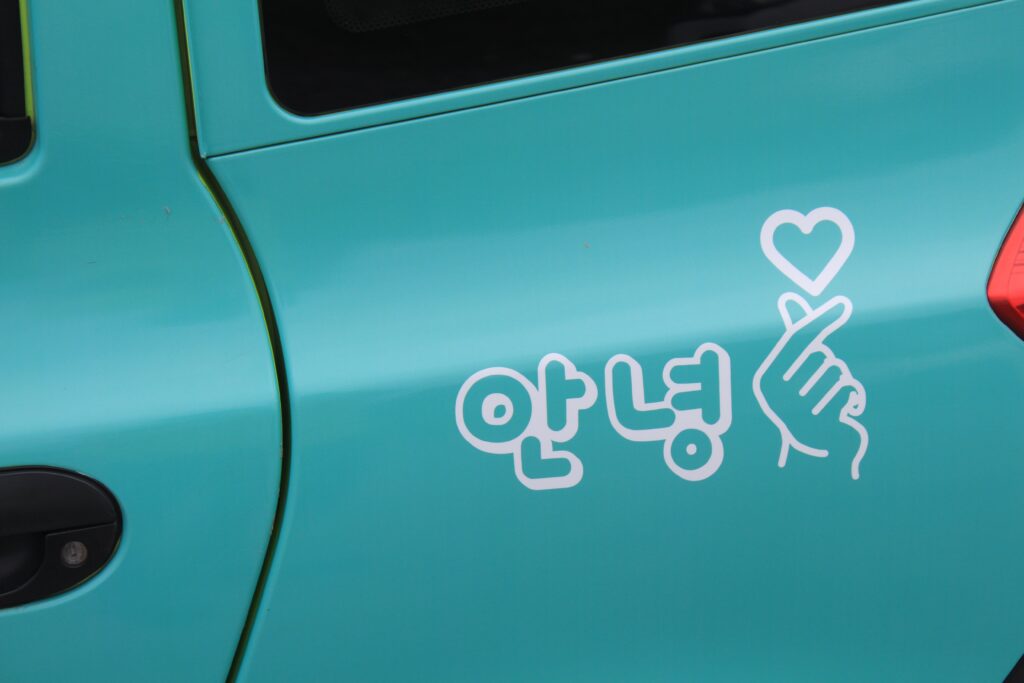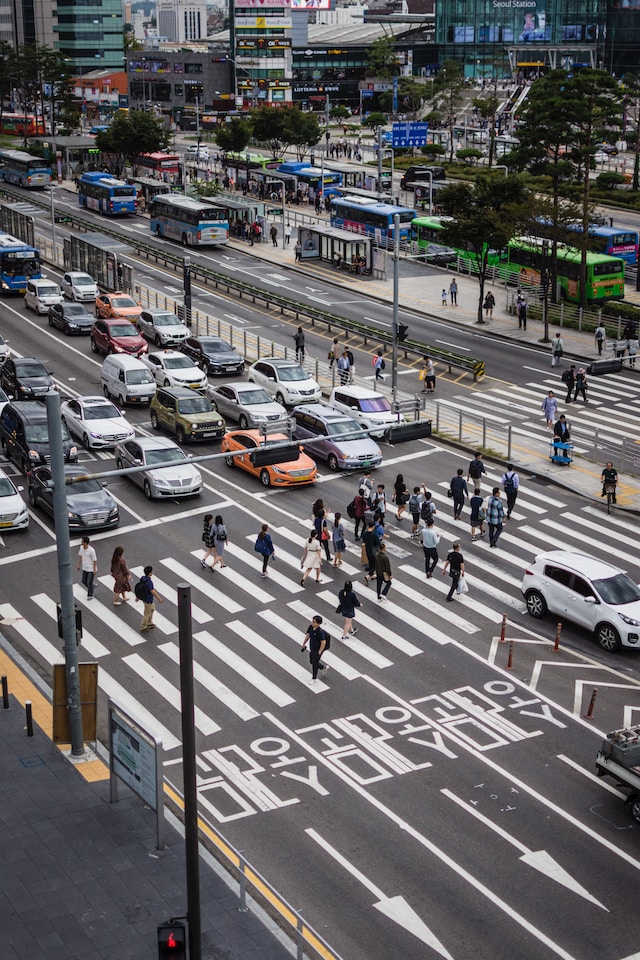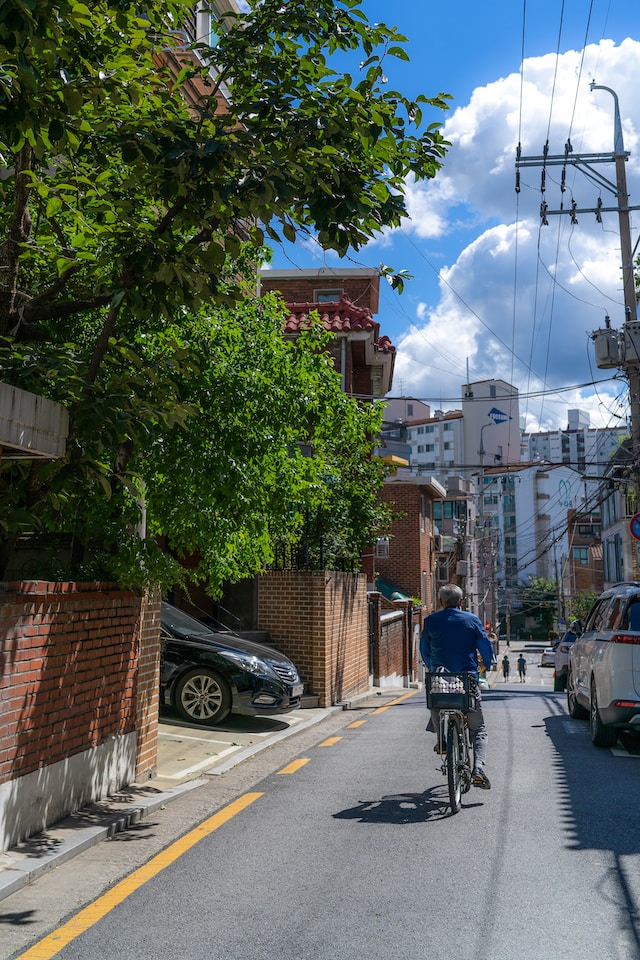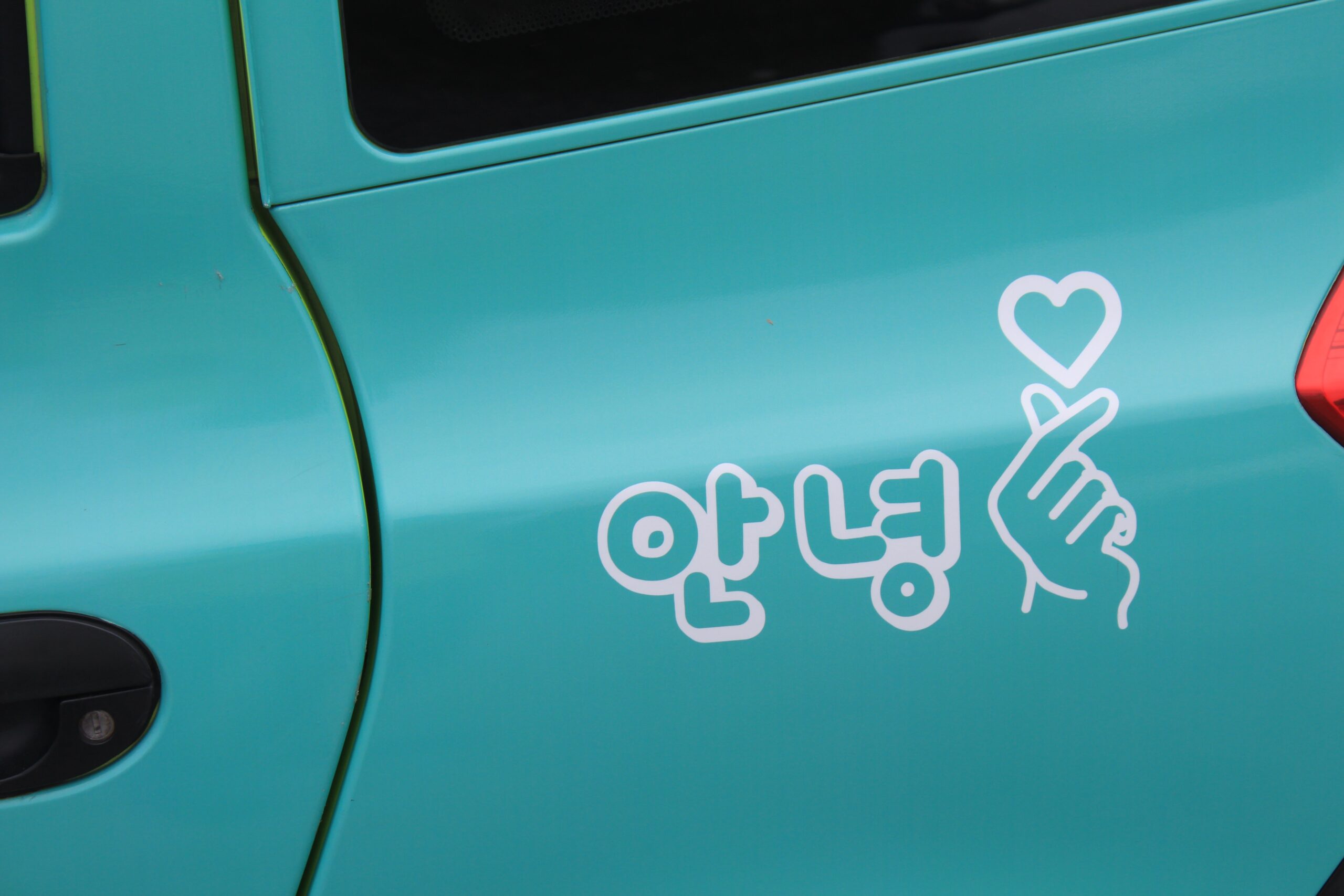Whether you’re a traveler, an expatriate, or simply intrigued by Korean culture, mastering practical Korean phrases can significantly enrich your daily interactions. In this concise blog post, we’ll explore practical and essential Korean language sentences tailored for effective communication in everyday life.

A photo by Drew Bae on Unsplash
Greetings and Polite Expressions – Practical and essential Korean sentences
Hello in Korean – Formal and informal way
| Pronunciation | Korean word | Meaning in Korean |
| annyeong haseyo | 안녕하세요 | Hello in a formal way |
| annyeong | 안녕 | Hello in an informal way |
This ubiquitous greeting is the key to opening conversations politely. It’s suitable for almost all situations and a great way to start any interaction.
Thank you in Korean – Formal and informal way – Practical and essential Korean sentences
| Pronunciation | Korean word | Meaning in Korean |
| gomapseumnida | 고맙습니다 | Thank you in a formal way to person who is older than you or someone who is not close to you |
| gomaweo | 고마워 | Thank you in an informal way to friends or someone younger than you |
| garmsaharpnida | 감사합니다 | Thank you in a formal way to person who is older than you or someone who is not close to you |
Expressing gratitude is a universal courtesy. “고맙습니다” is the formal way to convey your thanks and appreciation.
Sorry in Korean – Formal and informal way
| Pronunciation | Korean word | Meaning in Korean |
| mianhamnida | 미안합니다 | Sorry in a formal way that can be used to someone older than you or someone you don’t know well |
| mianhae | 미안해 | Sorry in an informal way that can be used to friends or someone younger than you |
| joesonghabnida | 죄송합니다 | Sorry in a formal way that can be used to someone older than you or someone you don’t know well |

사진: Unsplash의Janosch Lino
Navigating Daily Interactions – Practical and essential Korean sentences
Where is it?
eodieyo?
어디에요?
When you’re looking for directions or searching for a specific place, this question will guide you effectively.
How much is this?
igeo eolmaeyo?
이거 얼마에요?
Essential for shopping and dining out, this question lets you inquire about prices courteously.
How do I get there?
eotteoke gayo?
어떻게 가요?
When you’re trying to find your way around and need directions, this phrase is invaluable for asking how to reach your destination politely.
Where are you right now?
jigeum eodieyo?
지금 어디에요?
If you’re trying to meet up with someone and want to confirm their current location, this question will help you pinpoint their whereabouts.
Where is the bus stop?
beoseu jeongnyujang eodieyo?
버스 정류장 어디에요?
When you’re using public transportation and need to find the nearest bus stop, this question will guide you effectively.
Where is the train station?
yeok eodieyo?
역 어디에요?
If you’re planning to take the train and need directions to the nearest train station, this question is essential.
Where is [LOCATION]
[LOCATION] eodieyo?
[LOCATION] 어디에요?
Just add the location before saying ‘eodieyo’ customize your question in the similar situations.
What did you say?
mworago yo?
뭐라고요?
Use this phrase when you didn’t catch what someone said or need them to repeat themselves.
These additional examples for navigating daily interactions provide you with a broader range of phrases to help you find your way and communicate effectively while exploring South Korea.

Ordering Food and Dining Etiquette
Can I get the menu please?
menyu juseyo
메뉴 주세요
OR
menyu jusigetsseoyo?
메뉴 주시겠어요?
When you’re seated at a restaurant and want to see the menu, use this polite request to indicate that you’d like to browse their offerings.
Don’t forget to say thank you (we’ve learned it above) once you get the menu.
Would you like to eat this?
igeo meogeullaeyo?
이거 먹을래요
In a group setting, if you want to suggest a particular dish to your dining companions, use this phrase to offer the option.
It’s spicy.
maewoyo
매워요
It’s not spicy.
Arn maewoyo
안 매워요
If you’re concerned about the spiciness of a dish or you want to inform the server about your preference for mild or spicy food, you can use this expression.
I’d like to order, please.
jumun butakhamnida
주문 부탁합니다
In restaurants, this phrase helps you politely request your desired meal or drink.
Water, please.
mul juseyo
물 주세요
Staying hydrated is crucial, and this polite request ensures you get a glass of water at restaurants.
[WHAT YOU NEED] Please.
[WHAT YOU NEED] juseyo
[WHAT YOU NEED] 주세요
When you request or order something, just say the word you need and add ‘juseyo’ at the end.
It’s delicious.
masisseoyo
맛있어요
Show your appreciation for a tasty meal by using this compliment.
I enjoyed the meal.
siksa jal meogeosseumnida
식사 잘 먹었습니다
At the end of your meal, it’s polite to express your appreciation to the restaurant staff. This phrase conveys that you’ve had a satisfying dining experience.
Those examples for ordering food and dining etiquette provide you with different ways to navigate restaurant situations and convey your preferences while dining in South Korea.
Handling Emergencies – Practical and essential Korean sentences
Help, please.
dowajuseyo
도와주세요
In emergency situations, this phrase is invaluable for seeking assistance and alerting others to your needs.
Where is the hospital?
byeongwon eodieyo?
병원 어디에요?
When faced with a medical emergency or injury, this question will guide you to the nearest hospital.

Engaging in Small Talk and Socializing
What’s your name?
ireumi mwoeyo?
이름이 뭐에요?
When meeting new people, this friendly inquiry helps you initiate conversations and build connections.
Where are you from?
eodieseo waesseoyo?
어디에서 왔어요?
Engage in cultural exchange by asking about someone’s place of origin and sharing your own background.
How’s the weather?
nalssi eottaeyo?
날씨 어때요?
This classic conversation starter is great for breaking the ice. Koreans often discuss the weather as it’s a neutral and relatable topic.
What did you do today?
oneul mwo haesseoyo?
오늘 뭐 했어요?
Asking about someone’s daily activities is a friendly way to get to know them better and initiate a conversation about their interests.
What hobbies do you have?
museun chwimi ga isseoyo?
무슨 취미가 있어요?
OR
chwimi ga mwo yeyo?
취미가 뭐예요?
Inquiring about hobbies can lead to interesting discussions about shared interests and leisure activities.
When did you come to Korea?
eonje hanguk-e wasseoyo?
언제 한국에 왔어요?
If you’re speaking to a visitor or an expatriate, this question shows your interest in their journey and experiences in Korea.
Do you like Korean food?
hanguk eumsigeul johahaeyo?
한국 음식을 좋아해요?
Food is a great conversation topic in Korea. Asking about someone’s food preferences can lead to discussions about Korean cuisine and restaurant recommendations.
Please recommend local attractions.
jubyeon gwangwangji chucheonhae juseyo
주변 관광지 추천해 주세요
If you’re in Korea as a tourist, this polite request can help you gather information about must-visit places and hidden gems in the area.
It’s so much fun!
neomu jaemiisseoyo
너무 재미있어요

Expressing your enjoyment of an event, activity, or conversation is a positive way to engage in small talk and convey your enthusiasm.
These examples for engaging in small talk and socializing in Korean will enable you to connect with people, make new friends, and deepen your understanding of Korean culture through meaningful conversations. Small talk is the bridge to more profound connections, and these phrases will help you build rapport and create memorable interactions.
The practical and essential Korean sentences will serve as your linguistic toolbox for everyday communication in South Korea. Language is the bridge to understanding, and even a modest grasp of these essential phrases will go a long way in creating meaningful connections and facilitating smoother interactions. Embrace the beauty of the Korean language, and let it enhance your experiences as you navigate the rich tapestry of Korean culture and society. Additionally, it might be useful to know how to count numbers in Korean if you’re visiting Korea.
